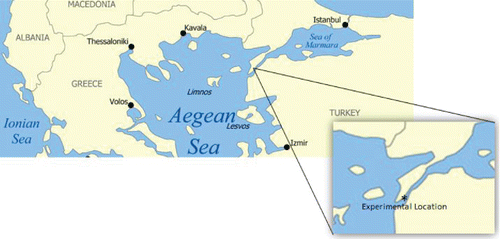Figures & data
Table 1. Analyses of copper-alloy* material of the mesh used for the fish pen (means ± standard deviation).
Table 2. Physico-chemical water quality parameters in the experimental site.
Table 3. Metals (mg/kg) in muscles tissue, digestive gland, gills and total edible part of mussels from different locations around copper alloy cage system. Values (means ± SD, n = 50) with different superscripts in same column are significantly different at 5% level.
Table 4. Permissible upper limits of trace element in marine products according to various international standards.
Table 5. Mean levels of Cu, Zn, Mn and Fe (mg/kg dry basis) reported in mussel (M. galloprovincialis) from different regions of the Mediterranean, and in the present study.
Table 6. Dietary reference intake (DRI) values of metals and estimated daily consumption (EDC) and individual risk rate (IRR) through the consumption of mussel grown around copper-alloy cage systems.
Table 7. Maximum allowable daily mussel consumption limit (MADCL), maximum allowable mussel consumption rate (MACR), and target hazardous quotients (THQ) of metals by consuming mussels grown around copper alloy mesh pens. For the estimations, total mussel tissues were considered as the edible part.

